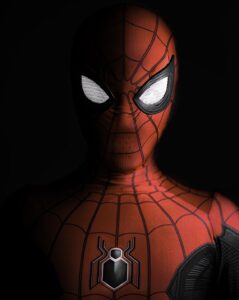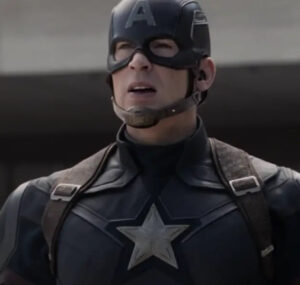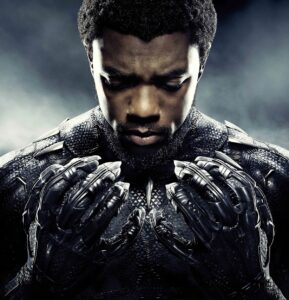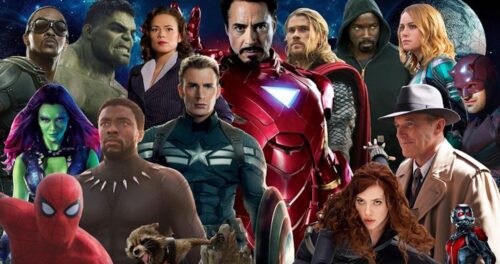There’s no way one can ignore it. What, you ask? The entertainment world trembling in anticipation every time a Marvel ship enters the harbor and unloads its cargo of upcoming hit movies and TV shows.
Just what is it about the Marvel Cinematic Universe that keeps fans begging for more?
Is it the all-star cast? Hilarious witty banter? Or the more touching moments like Stan Lee’s surprise cameos and the MCU fandom’s mantra, I love you 3000.
There has to be more to its success than that.
Around the world, the entertainment giant that is Marvel has drawn millions of people into their web-like universe of interconnected stories. And it isn’t just a form of adventure escape for comic book fans. Rather, it’s the overall approach Marvel takes when it comes to the art of storytelling. So, how does Marvel succeed in growing their die-hard comic book fan base into the global phenomenon it is today?
Let’s weave our way through the Marvel Cinematic Universe to find out just how superhero storytelling has stood the test of time.

Spinning a web of connection
Marvel used a web-like pattern for more than just its iconic character Spiderman. Starting with the first MCU released film Iron Man, Marvel has continued to focus on interwoven characters and storylines. These ideas and personality types bounce off each other in total unison creating a perfectly synced multiverse. This means that the superhero universe was ultimately established by crossing over aspects like common plot elements, film settings, and even characters. So that years later the culmination film Avengers: Endgame could continue the story with similar harmony.
This means Marvel storytelling actually comes down to a single word.
Consistency!
And not just in style, or casting but also in quality. Quality which filtered through multiple films that were years apart. Each story is woven as a single thread which joins the shared web universe together. But, how is such a web created? Here are just four features of what makes Marvel storytelling the success it is today.
1. Delivery frames content
Screenwriter William Goldman once said that all a writer can do is get the script right. And the script can be summed up in a single objective.
The line can make the scene.
And at the end of the day, it really ain’t a Marvel movie if there’s no witty pop culture references or snarky one-liners. All of which form the cornerstone of the Marvel Universe. And these quips and quotes are as integral to this world as Tony’s suit or Cap’s shield.
So whether the quip is as short as Captain America’s “I can do this all day” or as complex as Tony Stark’s ‘Shakespeare in The Park? Doth mother know you weareth her drapes’, each line is a brick that heightens the story.
To get the best out of delivery, the actor and on-set crew can even work together to improve a line. This way the actor gives the line a much better spin. So, what’s the best way to deliver content?
Well, in the case of Spider-Man’s death scene in Avengers: Infinity War, Tom Holland delivered four simple words, I don’t wanna go. This phrase eventually became one of the most heartbreaking lines of the Marvel Universe.
Was this line part of the script? No. It was 100% improvised.
The directors initially felt that the original line, ‘I’m sorry’ didn’t pull at the heartstrings of the audience enough so the final words were left up to the actor.
So was it the line or the actor that made the scene? Well, in this case it was both. By putting the original thought into his own words, Tom Holland was able to keep the scene honest and natural. Definitely a storytelling must-have.

2. Comedy cuts through tension
In-between all the chaos and destruction, well-timed comic relief can have a two-fold effect. By breaking up the on-screen tension, comedy can release negative emotions while still keeping the audience on the edge of their seat. And let’s be honest, who doesn’t love a high pressure, hero on hero mashup? In the case of Captain America: Civil War, the airport battle scene created nail-biting intensity with a surprisingly funny and entertaining dialogue. And this scene was without a doubt a pivotal moment for the MCU. Pitting a group of powerful superheroes who previously fought side by side as friends could have created on-screen hostility that may have translated negatively to the audience.
But, the scene’s well-timed humor makes for a great pause in combat mode. Essentially transitioning from a dark action sequence to light-hearted banter.
Think of Spider-Mans’ words to the Winter Soldier while fielding off a blow from the vibranium arm. He takes a moment mid-fight to express an almost child-like awe by saying, ‘You have a metal arm? That is awesome, dude!’ The possible anger becomes laughter which adds an impressive dynamic to the scene.
And, if you need a tip in the right direction, check out our helpful suggestions on how to use humor successfully.
3. Appeal to the heart
G is for Grief. A universal emotion that resonates with millions post-pandemic. And the MCU uses grief as a motive, which is both incredibly personal and relatable. It could even be called the backbone of their phase four film development.
Think of how Wanda Maximoff’s heartbreaking depiction of the grief leads to a make-believe town in which her partner Vision is still alive. Sam Wilson and Bucky Barnes are shown attending therapy sessions to help them cope with the loss of Captain America. Even all time baddie Loki, is given a do-over when he witnesses his death at the hands of Thanos.
This kind of storytelling uses grief to convey more than just sadness. It’s an element of the real-world that offers a sense of emotional support to viewers around the world.
4. Never underestimate the power of a good villain

A hero is only as good as its villain, right? Well, not necessarily.
The audience does need a villain to keep their hero on his/her toes. But something more than just a gun-toting bad guy is needed. Iron man in a way laid the foundation of what we could expect in an MCU villain. Charm, fun, fighting and even more importantly, personal connection.
How so?
It set the stage for a host of baddies that had a personal connection to the lead character. Think of Obadiah Stane. In an unexpected plot twist it was revealed that Stane was really the mastermind behind the kill Tony scheme. This definitely upped the emotional stakes because it depicted a personal betrayal of a father-figure that cut straight to the heart.
The same is true of Loki. Although the villainous brother of Thor, Loki later established himself as the foe who would bring the Avengers together for the first time. And even though Thor makes it clear that he won’t kill his brother, Loki’s betrayal once again cuts deep because it’s so personal and so close to home.
So, at the end of the day, having a bad guy complexity creates drama. And nothing creates better complexity than dysfunctional families.
How can Marvel storytelling work for you?

Here are a few things to keep in mind
1. Make it memorable
Give the audience something memorable. Something that brings a smile instead of a sigh. A fitting example of this is the Wakanda Forever Salute. Athletes have even celebrated their victories with it.
2. Break it up with humor
Well-placed simple humor adds more than just a funny aspect. Think of the scene when Thor gave the smaller of his weapons to Captain America. With a single line, humor replaces what could have become rivalry. And 15,952,473 views means this scene is definitely a must-watch for thousands of people.
3. Create an emotional contrast
Good vs evil is an age old ideal that still has viewers on the edge of their seat. And creating a villain who has deep emotions adds more substance to the storyline. Think of when Thanos cried for his adopted daughter Gomora. Despite having to sacrifice her, the scene balances his heartbreak with his determination to do what he thinks is best for mankind. So more powerful than the infinity gauntlet is the gauntlet of emotion because if the audience laughs with you then they’ll cry with you too.
Final thoughts
The entertainment harbor is abuzz with activity. This means storytelling involves more than just comic books and colorful costumes. So adapting your storytelling to suit the needs and wants of the audience is a must. But this also means that you can attract your own version of #marvelites.
You can do that by creating memorable moments, mixing light-hearted humor into your content, and using emotion to appeal to the audience. The key is to create a contrast between what’s good mixed in with a little of what’s not.
So, we wish you all the best as your storytelling unfolds. And whether you’re casting the next Thanos or Captain America, Voice123 has numerous talented voice actors to suit all your hero and villain needs. Go right ahead and book ’em!

